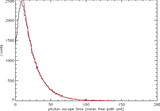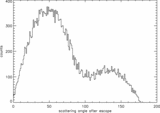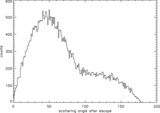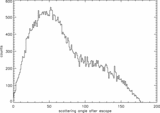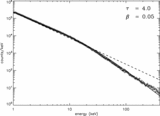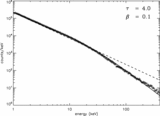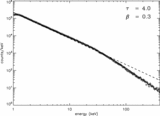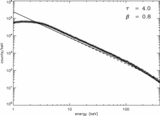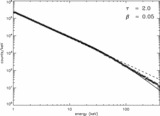Image Details
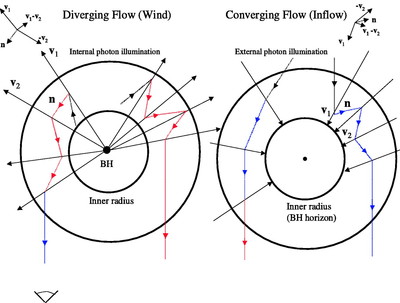
Caption: Fig. 1.
Left: Schematic diagram showing wind geometry. The relatively cold outflow (wind) originates at the inner radius. The optical depth of the wind in the Fe K continuum and the electron scattering optical depth of the wind are of order unity. A photon emitted near the inner boundary and subsequently scattered by an electron moving with velocity ﹩\boldsymbol{V}_{1}﹩ is received by an electron moving with velocity ﹩\boldsymbol{V}_{2}﹩, as shown. The change in frequency is ﹩\nu _{2}=\nu _{1}\left[1+( \boldsymbol{V}_{1}-\boldsymbol{V}_{2}) {\boldsymbol{\cdot}} \boldsymbol{n}/ c\right]﹩, where ﹩\boldsymbol{n}﹩ is a unit vector along the path of the photon scattered at the next point. In a diverging flow, ﹩( \boldsymbol{V}_{1}-\boldsymbol{V}_{2}) {\boldsymbol{\cdot}} \boldsymbol{n}/ c< 0﹩, and photons are successively redshifted, until scattered to an observer at infinity. The color of the photon path indicates the frequency shift in the rest frame of the receiver (electron or the Earth observer). Right: In a converging flow, ﹩( \boldsymbol{V}_{1}-\boldsymbol{V}_{2}) {\boldsymbol{\cdot}} \boldsymbol{n}/ c> 0﹩, and photons are blueshifted.
Copyright and Terms & Conditions
© 2007. The American Astronomical Society. All rights reserved. Printed in U.S.A.


